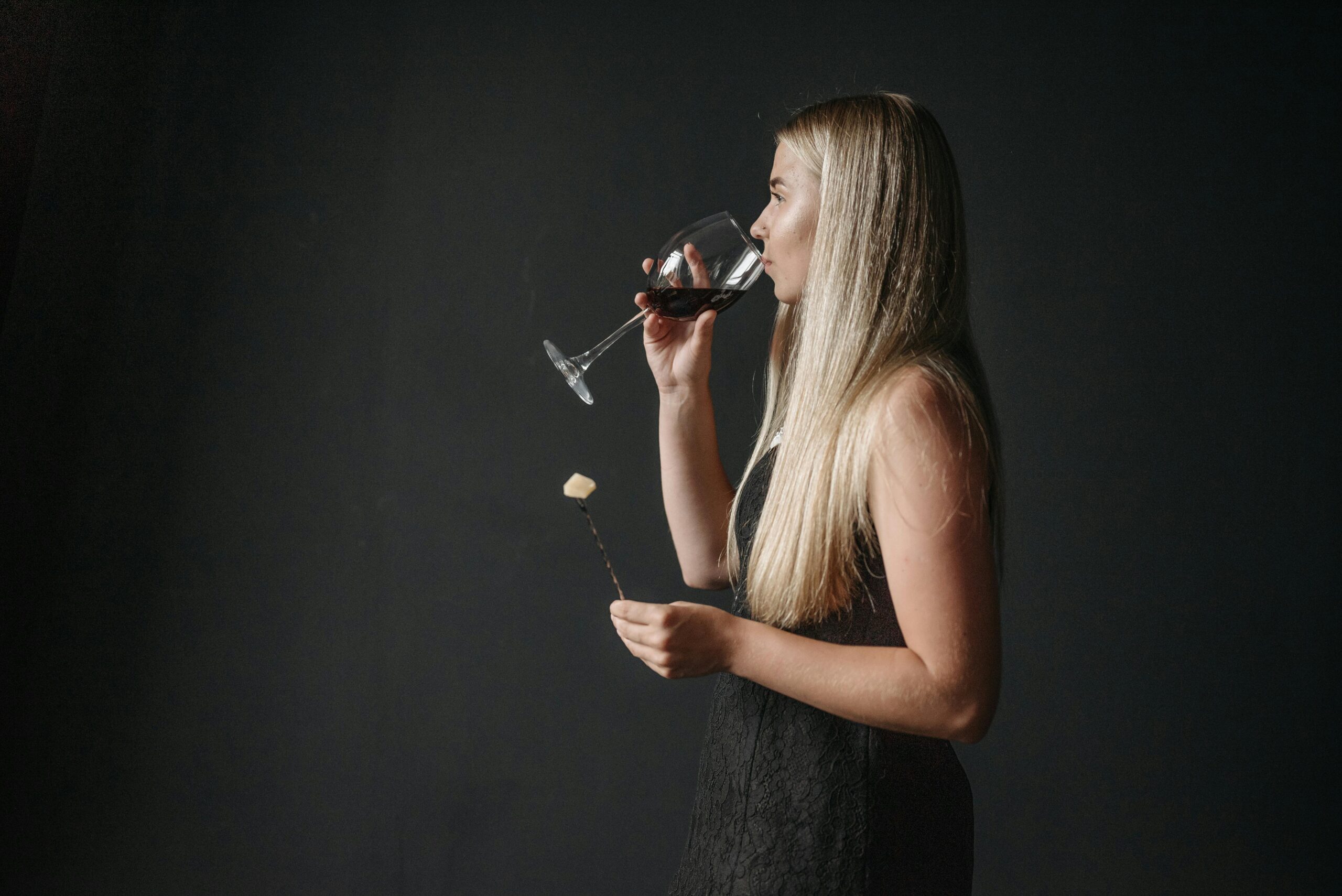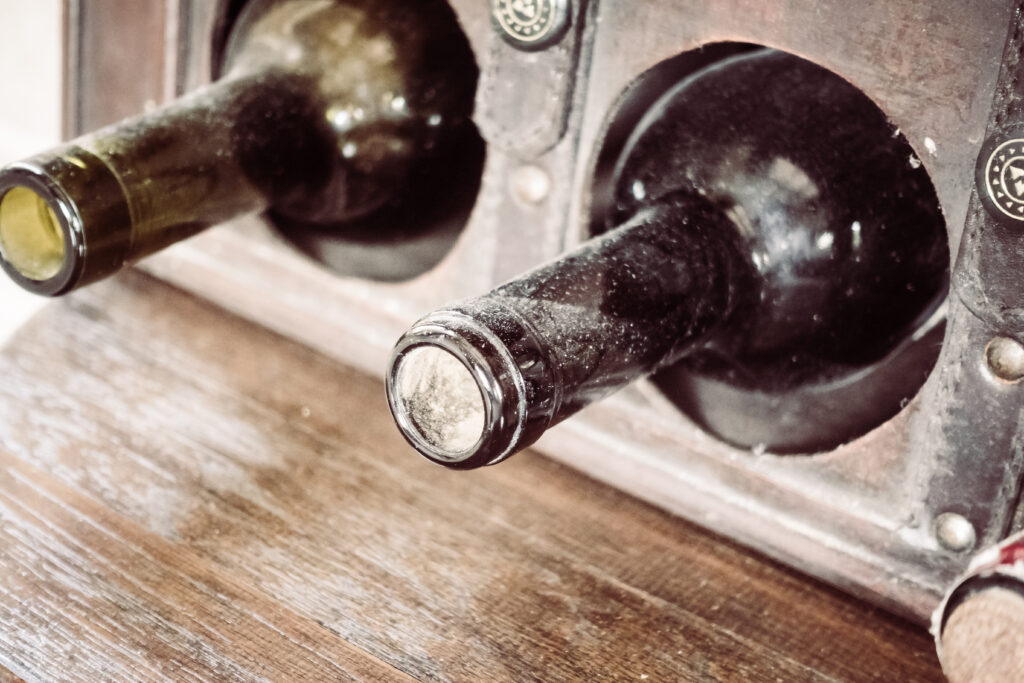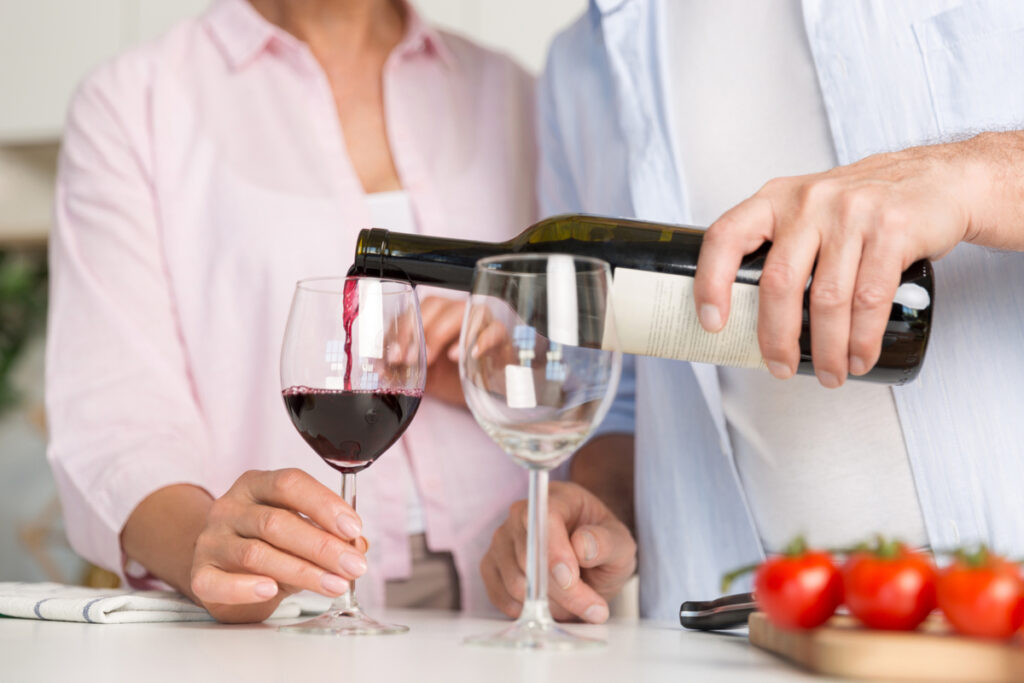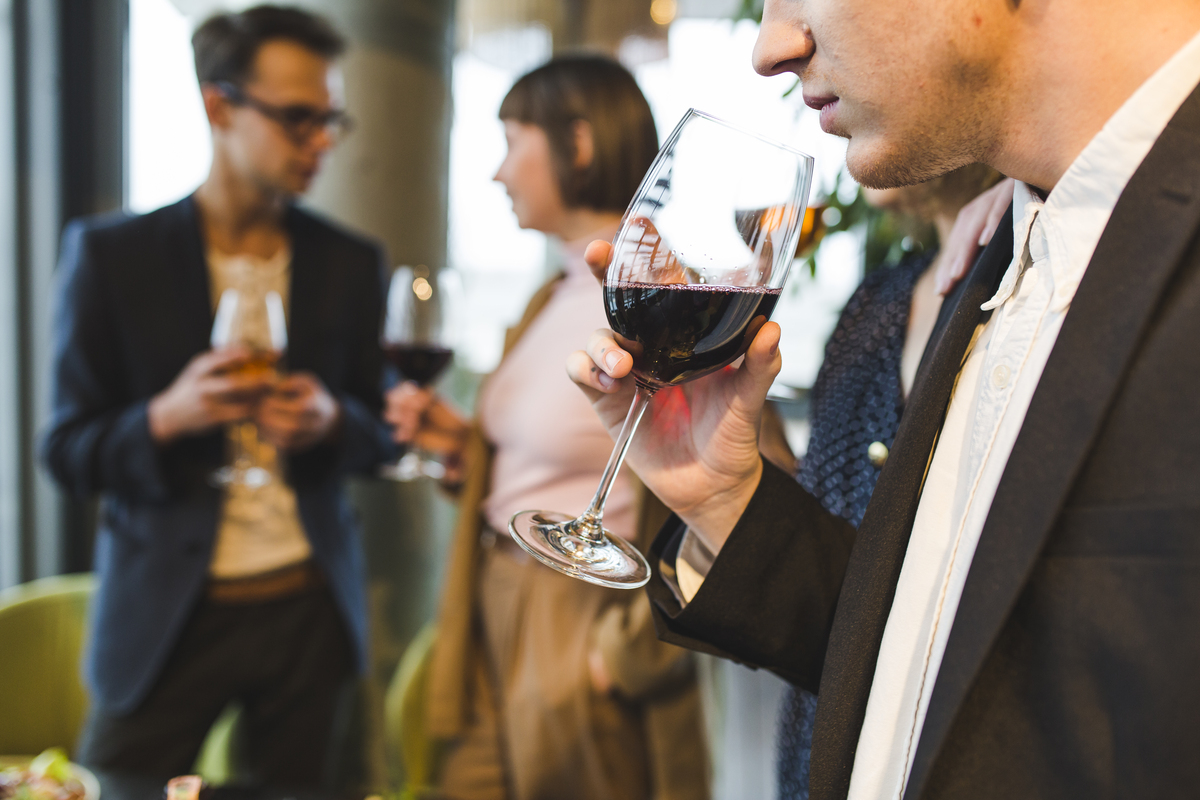Delve into the captivating world of wine tasting! Far beyond simply taking a sip, it’s a meticulous exploration that engages your senses to unlock a wine’s hidden depths. From its ancient roots dating back to the very beginnings of wine production to its modern, formalized methods, wine tasting offers a compelling journey for anyone curious to discover more. This exploration will unveil the various purposes of wine tasting, from developing a refined palate to uncovering new favorite wines, all while fostering a deeper understanding of the fascinating world behind every bottle. Whether you’re a seasoned enthusiast or simply taking your first steps, there’s a place for you in the vibrant world of wine tasting.

Exploring Personal Appreciation
Wine appreciation is a journey that goes beyond simply enjoying a drink. It’s an exploration of the senses, a celebration of diverse regions and grapes, and a path to discovering your own unique preferences. This section delves into the exciting world of developing your palate and embarking on a journey of experimentation to find wines you truly love.
Sensory Analysis: Developing Your Palate
The magic of wine appreciation lies in its ability to captivate multiple senses. To fully appreciate a wine, we must become attuned to the visual clues, the aromatic profile, and of course, the taste itself.
Sight: The first impression often comes from sight. Hold your glass up to the light and observe the wine’s color. Is it a pale straw yellow, indicative of a young Sauvignon Blanc, or a deep ruby red, hinting at a mature Cabernet Sauvignon? Clarity can also be an indicator of quality; a hazy wine might be faulty. Look at the “legs” or streaks that form on the inside of the glass as you swirl it. These can indicate the wine’s viscosity or alcohol content.
Smell: Aroma is arguably the most crucial aspect of wine appreciation. Swirl the wine gently in your glass and cup your hands around it to capture the released aromas. Take short, sharp sniffs. Primary aromas are those inherent to the grape variety itself, like blackcurrant in Cabernet Sauvignon or citrus in Sauvignon Blanc. Secondary aromas arise from the winemaking process, such as vanilla or toast from oak barrel aging. Tertiary aromas develop over time in the bottle, with notes like leather or tobacco emerging in aged wines.
Taste: Finally, we come to the taste. Take a sip and swish the wine around your mouth, coating your palate. Notice the initial sweetness or dryness. How much acidity is there, making your mouth water? Can you detect tannins, a drying sensation that comes from grape skins and seeds, often found in red wines? The body, which refers to the weight and texture of the wine on your tongue, can range from light and refreshing to full-bodied and mouth-coating. Pay attention to the flavor profile – are there fruity notes like cherry or plum? Earthy hints like mushroom or truffle? Developing your vocabulary with descriptive terms like “bright,” “earthy,” “spicy,” or “smoky” will enhance your ability to communicate your experience.
Experimentation and Discovery
The beauty of wine appreciation lies in its vastness. There’s a world of wines waiting to be explored, each offering a unique sensory experience.
Grape Varietals: Start by familiarizing yourself with the common grape varietals. Cabernet Sauvignon, known for its bold tannins and dark fruit flavors, is a widely recognized red wine. Chardonnay, a versatile white grape, can produce wines ranging from crisp and unoaked to rich and buttery. Pinot Noir, a lighter-bodied red, offers delicate aromas of red fruit and spice. Explore wines made from these grapes to understand their basic characteristics.
Wine Regions: Branch out and discover wines from different regions around the world. Bordeaux in France is famous for its Cabernet Sauvignon blends, while Napa Valley in California is known for its bold, fruit-forward Cabernet Sauvignons. Explore Rioja in Spain for a taste of Tempranillo, a unique red grape. Each region has its own terroir, a combination of climate, soil, and grape varietals, that influences the style of the wine.
Wine Styles: Don’t limit yourself to just dry wines. Explore the world of sweet wines, like Riesling or Sauternes, known for their honeyed character. Try sparkling wines like Champagne or Prosecco for a celebratory touch. Fortified wines, like Port or Sherry, offer a unique taste profile with higher alcohol content.
As you experiment with different wines, keep track of your preferences. Do you enjoy bold reds or crisp whites? Do you prefer unoaked Chardonnay or the richness of oak aging? With each new experience, your palate will become more refined, allowing you to identify the nuances that set each wine apart.
The journey of wine appreciation is a continuous exploration. By engaging your senses, experimenting with different types of wines, and keeping track of your preferences, you’ll discover a world of flavors and aromas waiting to be savored. There’s a perfect wine out there for everyone, waiting to be discovered.

Education and Learning
As your passion for wine deepens, you might find yourself wanting to delve deeper into the fascinating world of winemaking and the unique characteristics of various wine regions. This section explores resources and opportunities to expand your knowledge and understanding.
Deep Dive into Winemaking
Winemaking is an art and a science, and understanding the process behind a bottle adds a whole new layer of appreciation.
From Grape to Glass: Start by understanding the grape growing process. Different climates and soil types influence the characteristics of the grapes. Varietals, like Cabernet Sauvignon or Chardonnay, each have their own inherent qualities. Learn about factors like sun exposure, rainfall, and viticulture practices (grape growing techniques) that impact the final product.
The Magic of Transformation: Winemaking transforms grapes into the complex beverage we enjoy. Fermentation, the process by which yeast converts grape sugars into alcohol and carbon dioxide, is the heart of winemaking. Different techniques like temperature control and the use of wild yeasts can influence the wine’s style. Explore the world of aging – how stainless steel tanks, oak barrels, or even concrete vessels can shape the flavor profile of the wine. Blending, the art of combining different wines to achieve a desired style, is another crucial step in the process.
Terroir: A Fingerprint of Place: Each vineyard has a unique set of characteristics known as terroir. This combination of climate, soil composition, and grape varietals leaves its fingerprint on the final wine. Learn how terroir influences factors like acidity, tannins, and flavor profile. Explore how a cool-climate Pinot Noir from Burgundy, France, with its bright acidity and delicate fruit notes, differs from a warmer climate Pinot Noir from California, known for its bolder fruit flavors.
Vintage Variation: No two vintages (years) are exactly alike. Weather conditions during the growing season significantly impact the grapes, leading to variations in the final wine. Understanding vintage variation allows you to make informed choices when selecting wines and appreciate the subtle differences between years.
Unveiling the World’s Wine Regions
The world of wine is a tapestry woven from distinct regions, each with its own story to tell.
A Grand Tour: Explore the major wine regions of the world. France, Italy, Spain, and California are just a few of the prominent players. Each region boasts a unique set of grape varietals and winemaking traditions that define its signature styles. For instance, Bordeaux in France is famous for its Cabernet Sauvignon-dominant blends, while Tuscany in Italy is known for its Sangiovese-based Chianti wines.
Beyond the Classics: Venture beyond the well-known regions and discover the hidden gems. Explore up-and-coming wine regions like Argentina’s Malbec country or New Zealand’s innovative Sauvignon Blancs. Learn about the unique indigenous grape varietals and winemaking practices that set these regions apart.
Climate and Geography Tell a Story: Climate and geography play a crucial role in shaping the characteristics of a region’s wines. Warmer climates typically produce bolder, riper wines, while cooler climates favor wines with higher acidity and lighter bodies. Understanding the interplay between climate and geography allows you to appreciate the diversity of styles across the globe.
Learning from the Masters
There’s no substitute for learning from the experts. Consider these avenues to gain valuable insights from winemakers and sommeliers.
Tastings with a Purpose: Attend tastings led by winemakers or sommeliers. These events offer a unique opportunity to learn firsthand about the wines, the production process, and the philosophies behind them. Ask questions, engage in discussions, and gain a deeper understanding of the wines you’re tasting.
Meeting the Makers: Many wineries offer tours and events where you can meet the winemakers themselves. These experiences provide a window into the passion and dedication that goes into crafting a bottle of wine. Learn about their approach to winemaking, the challenges they face, and their vision for the future.
By embarking on this educational journey, you’ll transform your wine appreciation into a rich and rewarding experience. You’ll not only enjoy the taste of the wine but also understand the story behind each bottle, from the vineyard to your glass.

Discovering New Favorites
Comparing and Contrasting Different Wines
The beauty of wine tasting lies in the opportunity to compare and contrast different wines. This comparative analysis is a powerful tool for refining your palate and discovering new favorites. Here’s how:
Identifying Similarities and Differences: By tasting wines from the same grape varietal but from different regions, you can identify the impact of terroir (climate, soil, etc.) on the final product. For example, a Cabernet Sauvignon from Napa Valley might be bolder and fruitier compared to one from Bordeaux, which may showcase more earth and mineral notes. Similarly, comparing wines made with different techniques, such as stainless steel fermentation versus oak aging, allows you to discern the influence of these methods on the wine’s character.
Refining Your Palate: As you engage in comparative tasting, your palate becomes more sensitive to subtle nuances. You’ll start to pick up on finer details like the types of fruit flavors, the intensity of tannins, or the length of the finish. This heightened level of perception allows you to appreciate the intricate tapestry of flavors that each wine has to offer.
Learning to Appreciate Subtle Variations in Style: Wine styles can vary greatly within a single grape varietal or region. For instance, Pinot Noir wines can range from light and fruity to full-bodied and earthy, depending on the winemaking approach. By tasting different styles, you discover your preferences and gravitate towards wines that resonate with your palate. This exploration broadens your enjoyment of wine and opens doors to new favorites you may not have considered before.
Finding Wines for Different Occasions
Wine tasting equips you to select the perfect bottle for any occasion. Here’s how it helps:
Choosing Wines for Everyday Enjoyment: You can discover versatile wines suitable for casual weeknight dinners or gatherings with friends. These wines may be lighter-bodied and easy-drinking, perfect for everyday enjoyment without overwhelming the palate.
Selecting Wines for Special Occasions and Celebrations: For special events and celebrations, you might seek out more complex and prestigious wines. Knowledge gained through tasting allows you to choose wines that add an extra layer of sophistication and enjoyment to the occasion.
Discovering Food-Friendly Wines for Specific Pairings: Wine tasting fosters an understanding of how different wines interact with food. You learn to identify food-friendly characteristics and choose wines that complement or contrast with specific dishes. This allows you to create truly harmonious dining experiences where the wine enhances the flavors of the food, and vice versa.
By actively comparing and contrasting wines, and understanding how they pair with different occasions and food, you gain the confidence to navigate the vast world of wine and discover new favorites that perfectly suit your preferences and needs.

Food Pairing: A Symphony of Flavor
Wine tasting isn’t just about appreciating the beverage itself; it’s also about understanding how wine interacts with food to create a truly memorable culinary experience. Food pairing involves finding the perfect harmony between the characteristics of the wine and the elements of the dish.
Mastering the Art of Matching
Balancing Body and Acidity: Matching the body (weight and texture) of the wine to the richness of the food is crucial. Lighter-bodied wines like Pinot Noir pair well with delicate fish dishes, while full-bodied Cabernet Sauvignon complements the richness of grilled steak. Similarly, a wine’s acidity should balance the flavors in the food. A high-acid Sauvignon Blanc cuts through the creaminess of a pasta dish, while a slightly sweet Riesling can complement the spiciness of Thai cuisine.
Complementary and Contrasting Flavors: Food pairing can involve both complementary and contrasting flavors for an exciting interplay. Complementary pairings involve matching similar flavor profiles. For example, a fruity Merlot can enhance the berry notes in a duck dish. Conversely, contrasting pairings create a dynamic tension. A crisp Sauvignon Blanc with its high acidity can refresh the palate after a bite of creamy cheese.
Beyond the Classics
While classic pairings like Cabernet Sauvignon with steak or Chardonnay with chicken are well-known, food pairing is a dynamic exploration. Here’s how tasting empowers you:
Exploring the Nuances: By understanding the principles of matching and experimenting with different wines, you can move beyond the classics and discover exciting new combinations. A lighter-bodied Pinot Noir can surprisingly complement a grilled tuna steak, while a bold Zinfandel might pair beautifully with a spicy lamb curry.
Finding Your Perfect Match: Ultimately, food pairing is a personal journey. Through tasting, you discover your own preferences for complementary or contrasting flavors. You might find that you enjoy a touch of sweetness with your savory dishes or prefer a high-acid wine to cut through richness.
Wine tasting equips you with the knowledge and confidence to explore the world of food pairing. It allows you to create a symphony of flavors on your plate, transforming mealtimes into truly memorable experiences.

The Social Aspect of Wine Tasting: Sharing the Joy of Discovery
Wine tasting transcends the solitary act of sipping a beverage. It thrives as a social activity, fostering connections and creating shared experiences.
A Fun and Communal Activity
Sharing the Experience: Wine tasting is an excellent way to connect with friends and family. It provides a relaxed and enjoyable atmosphere where you can share the journey of discovery. Discussing your observations, comparing notes, and learning from each other’s palates adds another layer of depth to the experience. Whether it’s a casual gathering at home or a formal tasting event, wine becomes a social lubricant, facilitating conversation and fostering laughter.
Learning from Each Other: Everyone brings a unique perspective to the table. As you taste with others, you gain valuable insights from their experiences and preferences. A friend might point out a subtle aroma you missed, or a family member might introduce you to a grape varietal or region you haven’t explored before. This collective learning expands your knowledge base and broadens your appreciation for the diverse world of wine.
Enjoying a Relaxed and Social Atmosphere: Wine tasting often takes place in a relaxed and social environment. Whether it’s a cozy living room, a charming winery patio, or a bustling restaurant, the atmosphere can be a welcome escape from the daily grind. Sharing a glass of wine with loved ones fosters a sense of camaraderie and allows you to unwind and truly enjoy the moment.
Attending Wine Events and Tastings
The social aspect of wine tasting extends beyond intimate gatherings with close circles. Wine events and tastings offer exciting opportunities to:
Meet New People with Similar Interests: These events attract passionate individuals who share your enthusiasm for wine. It’s a fantastic opportunity to strike up conversations, connect with fellow enthusiasts, and expand your social circle.
Expanding Your Knowledge and Appreciation: Educational wine tastings, led by sommeliers or winemakers, provide an enriching learning experience in a group setting. You gain valuable insights into the world of winemaking, explore specific grape varietals or regions, and gain confidence in your tasting abilities.
Participating in Educational and Entertaining Events: Wine events come in many forms. Beyond formal tastings, there are educational seminars, vineyard tours with winemaker chats, or even blind tasting competitions. These events offer a blend of learning, entertainment, and social interaction, making them a delightful way to delve deeper into the world of wine.
Wine tasting, with its inherent emphasis on shared experiences and social connection, allows you to build relationships, broaden your horizons, and truly savor the joy of discovery alongside others. It becomes a celebration of the art, culture, and sheer enjoyment that wine brings to our lives.
Conclusion
Wine tasting offers a multifaceted journey of exploration and appreciation. It allows you to develop a refined palate, delve into the fascinating world of winemaking, and discover new favorites that tantalize your taste buds. But the true beauty lies in the ongoing process of learning and discovery. With every sip, every comparison, and every shared experience, you expand your knowledge and unlock new layers of complexity within the world of wine. So, take the plunge! Start by attending a local tasting or gathering some friends for an evening of exploration. Numerous resources, from books and online guides to educational seminars and winery tours, await you. As you embark on this exciting journey, remember, the most important ingredient is your own curiosity and willingness to savor the experience. Let the adventure of wine tasting begin!






 Beyond the Basics: Embracing Diverse Tasting Formats
Beyond the Basics: Embracing Diverse Tasting Formats Beyond the Tasting: Making Memories and Expanding Your Knowledge
Beyond the Tasting: Making Memories and Expanding Your Knowledge













 World of Wine Tours: Unveiling the Magic Behind the Sip
World of Wine Tours: Unveiling the Magic Behind the Sip Different Types of Wine Tours
Different Types of Wine Tours Planning Your Wine Tour Adventure
Planning Your Wine Tour Adventure Making the Most of Your Wine Tour
Making the Most of Your Wine Tour






























